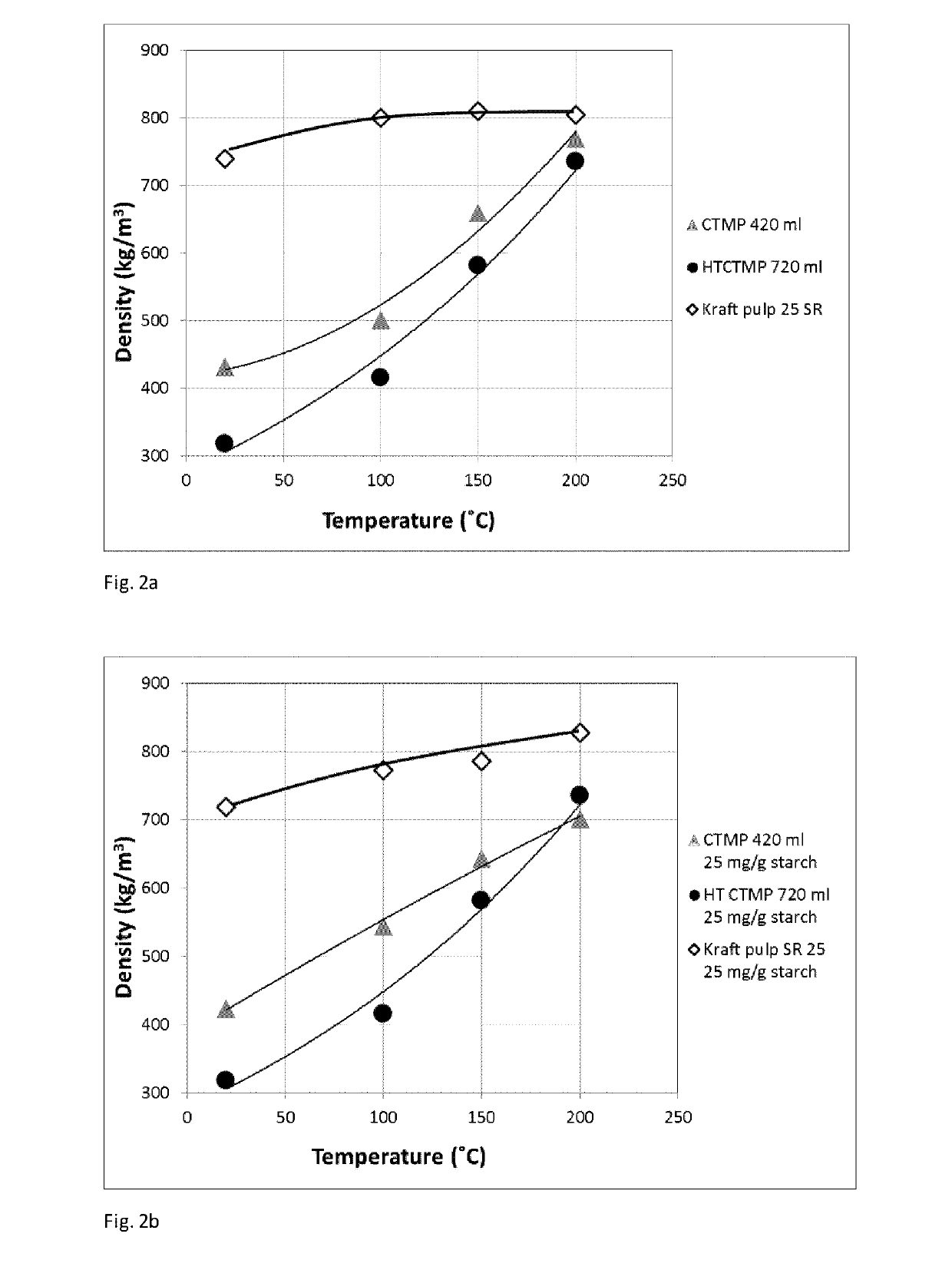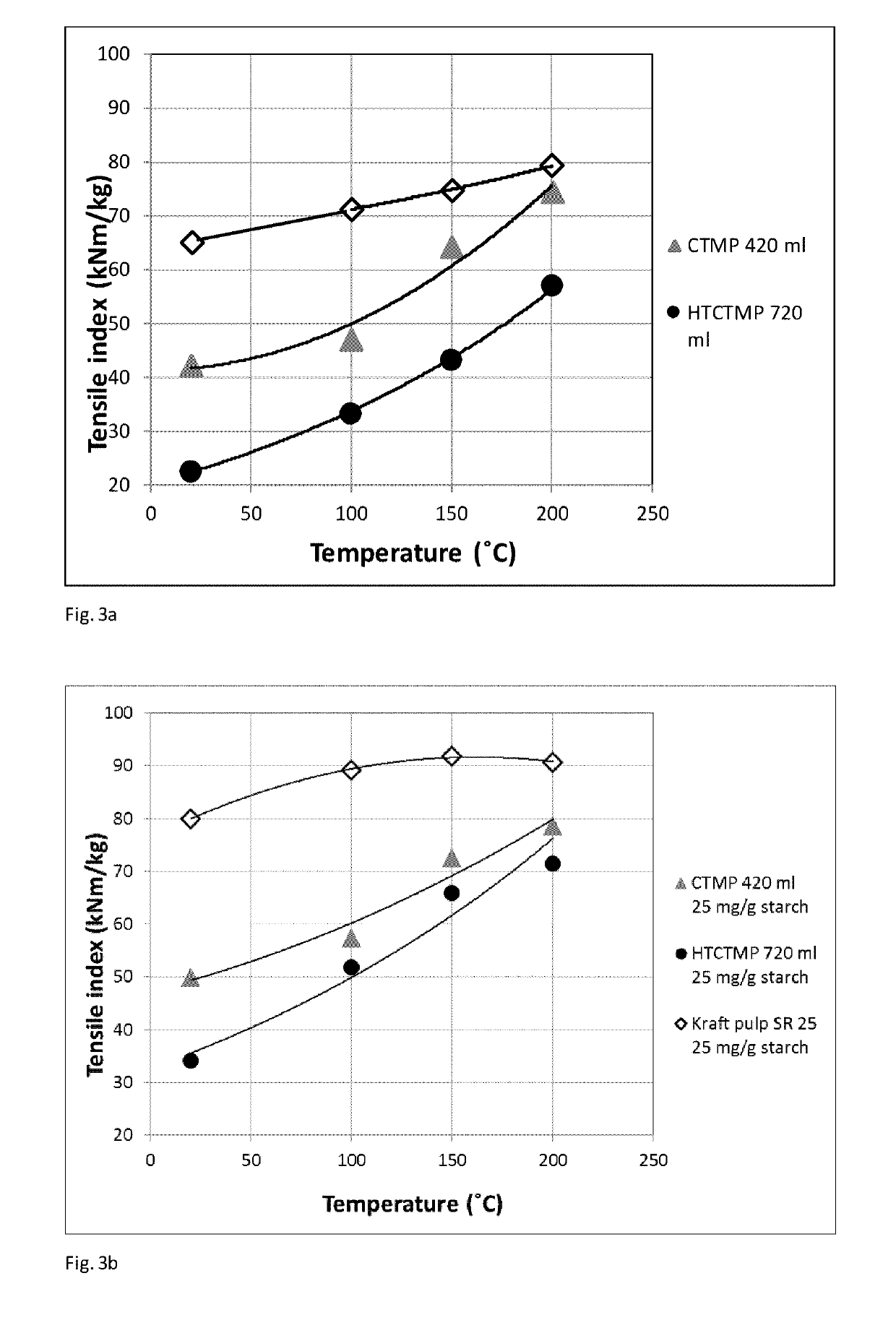A paper or paperboard product comprising at least one ply containing high yield pulp and its production method
a technology of paper or paperboard products and high yield, which is applied in the direction of papermaking, textiles and paper, dryer sections, etc., can solve the problems of high energy consumption in the production of these types of hyp qualities, unfavorable softening of fiber walls in papermaking processes at the manufacturing of paperboard products, and insufficient strength of fiber-fiber bonds, etc., to achieve high strength requirements, reduce energy consumption in production, and reduce the effect of energy consumption
- Summary
- Abstract
- Description
- Claims
- Application Information
AI Technical Summary
Benefits of technology
Problems solved by technology
Method used
Image
Examples
example
[0053]Press Drying of Spruce CTMP Containing Sheets at Temperatures Below and Above the Softening Temperature of Water-Saturated Lignin
[0054]A press-drying trial was performed in the pilot plant shown schematically in FIG. 1. Laboratory sheets 5 at 40% dry content, manufactured in a Rapid Köthen sheet former (ISO / DIS 5269-2) were fed into the nip between a heated cylinder 1 and a press roll 2. Sheets containing spruce CTMP with two different Canadian Standard freeness (CSF) levels, 420 and 720 ml respectively, were tested. These pulps can be manufactured at a low input of electric energy in refining, i.e. below 1200 kWh / ton. Sheets from a standard bleached kraft pulp were used as reference. In some trials the CTMP fiber materials were surface modificated with a low dosage of cationic starch. Cylinder and press nip temperature was varied between 25 and 200° C. The same nip pressure was applied in all trial points.
[0055]Preparation of Pulps for the Trial
[0056]A special low energy, hig...
PUM
| Property | Measurement | Unit |
|---|---|---|
| density | aaaaa | aaaaa |
| temperature | aaaaa | aaaaa |
| temperature | aaaaa | aaaaa |
Abstract
Description
Claims
Application Information
 Login to View More
Login to View More - R&D
- Intellectual Property
- Life Sciences
- Materials
- Tech Scout
- Unparalleled Data Quality
- Higher Quality Content
- 60% Fewer Hallucinations
Browse by: Latest US Patents, China's latest patents, Technical Efficacy Thesaurus, Application Domain, Technology Topic, Popular Technical Reports.
© 2025 PatSnap. All rights reserved.Legal|Privacy policy|Modern Slavery Act Transparency Statement|Sitemap|About US| Contact US: help@patsnap.com



